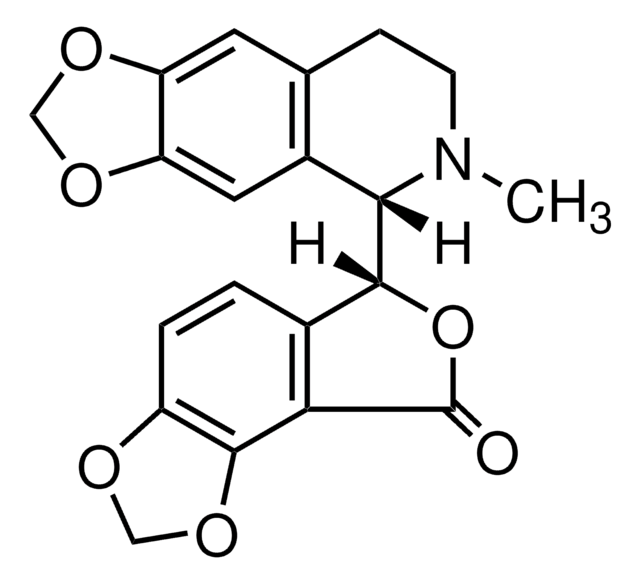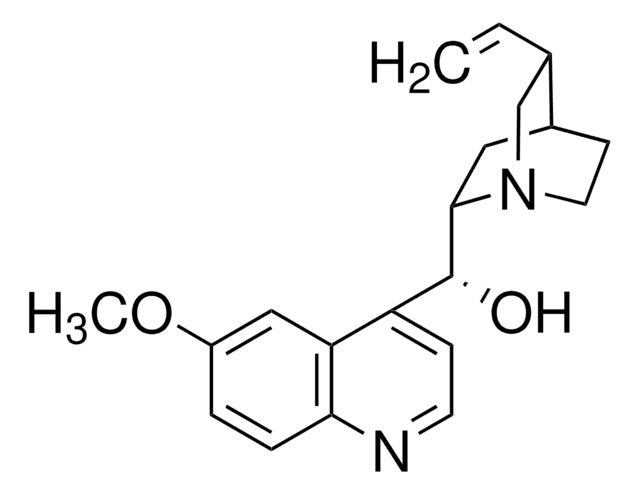B6434
Bretazenil
≥96% (HPLC), solid
Sinónimos:
9H-Imidazo[1,5-a]pyrrolo[2,1-c][1,4]benzodiazepine-1-carboxylic acid, Ro 16-6028
About This Item
Productos recomendados
assay
≥96% (HPLC)
form
solid
color
white
solubility
DMSO: 24 mg/mL
H2O: insoluble
originator
Roche
storage temp.
2-8°C
SMILES string
[H][C@@]12CCCN1C(=O)c3c(Br)cccc3-n4cnc(C(=O)OC(C)(C)C)c24
InChI
1S/C19H20BrN3O3/c1-19(2,3)26-18(25)15-16-13-8-5-9-22(13)17(24)14-11(20)6-4-7-12(14)23(16)10-21-15/h4,6-7,10,13H,5,8-9H2,1-3H3/t13-/m0/s1
InChI key
LWUDDYHYYNNIQI-ZDUSSCGKSA-N
General description
Application
Biochem/physiol Actions
Features and Benefits
Storage Class
11 - Combustible Solids
wgk_germany
WGK 3
flash_point_f
Not applicable
flash_point_c
Not applicable
ppe
Eyeshields, Gloves, type N95 (US)
Certificados de análisis (COA)
Busque Certificados de análisis (COA) introduciendo el número de lote del producto. Los números de lote se encuentran en la etiqueta del producto después de las palabras «Lot» o «Batch»
¿Ya tiene este producto?
Encuentre la documentación para los productos que ha comprado recientemente en la Biblioteca de documentos.
Contenido relacionado
DISCOVER Bioactive Small Molecules for Neuroscience
Nuestro equipo de científicos tiene experiencia en todas las áreas de investigación: Ciencias de la vida, Ciencia de los materiales, Síntesis química, Cromatografía, Analítica y muchas otras.
Póngase en contacto con el Servicio técnico








